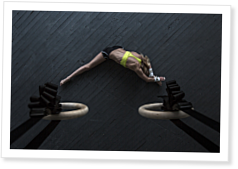
Theresa Larson explains when and how to stretch—and why some people shouldn’t stretch at all.
Theresa Larson’s physical-therapy patients come to her with a variety of ailments, but back pain is one of the most common complaints.
Recently, a woman who does CrossFit and yoga came to Larson complaining of low-back pain that radiated down her leg.
“What stretches should I be doing?” she asked.
Before answering, Larson asked the woman to bend at the waist with her legs straight and touch the ground.
“She flopped over and put her elbows on the ground,” Larson said. “I asked her if she felt any tension—any hamstring stretch at all—and she said no.”
Larson, a physical therapist specializing in movement and rehabilitation for athletes and adaptive athletes, told the woman she could help, but the treatment wouldn’t involve any stretching. The woman was too flexible. She lacked stability in her joints, and that was contributing to her low-back pain.
Stretching is something we all feel we should be doing, but according to Larson, not everyone needs to stretch. People with too much mobility frequently lack stability.
“When you bend over and touch your toes, you should be able to feel tension in your hamstrings and butt. If you don’t, you need more stability. So stretching more isn’t going to get you that. It’s going to hinder you,” Larson said.
If you can’t touch your toes, you could benefit from increased flexibility, but research shows traditional static stretching—holding a stretch for a few seconds to a few minutes—is better after the workout. This doesn’t mean you should jump into a workout cold, however. Movement-specific dynamic stretching is an essential part of any athletic pursuit, and proprioceptive-neuromuscular-facilitation (PNF) stretching is also a valuable tool for athletes.
Stretching is simply not a one-size-fits-all prescription. Before you join your friend for an epic mobility session, assess your flexibility, stability and the type of activity ahead.
No comments:
Post a Comment